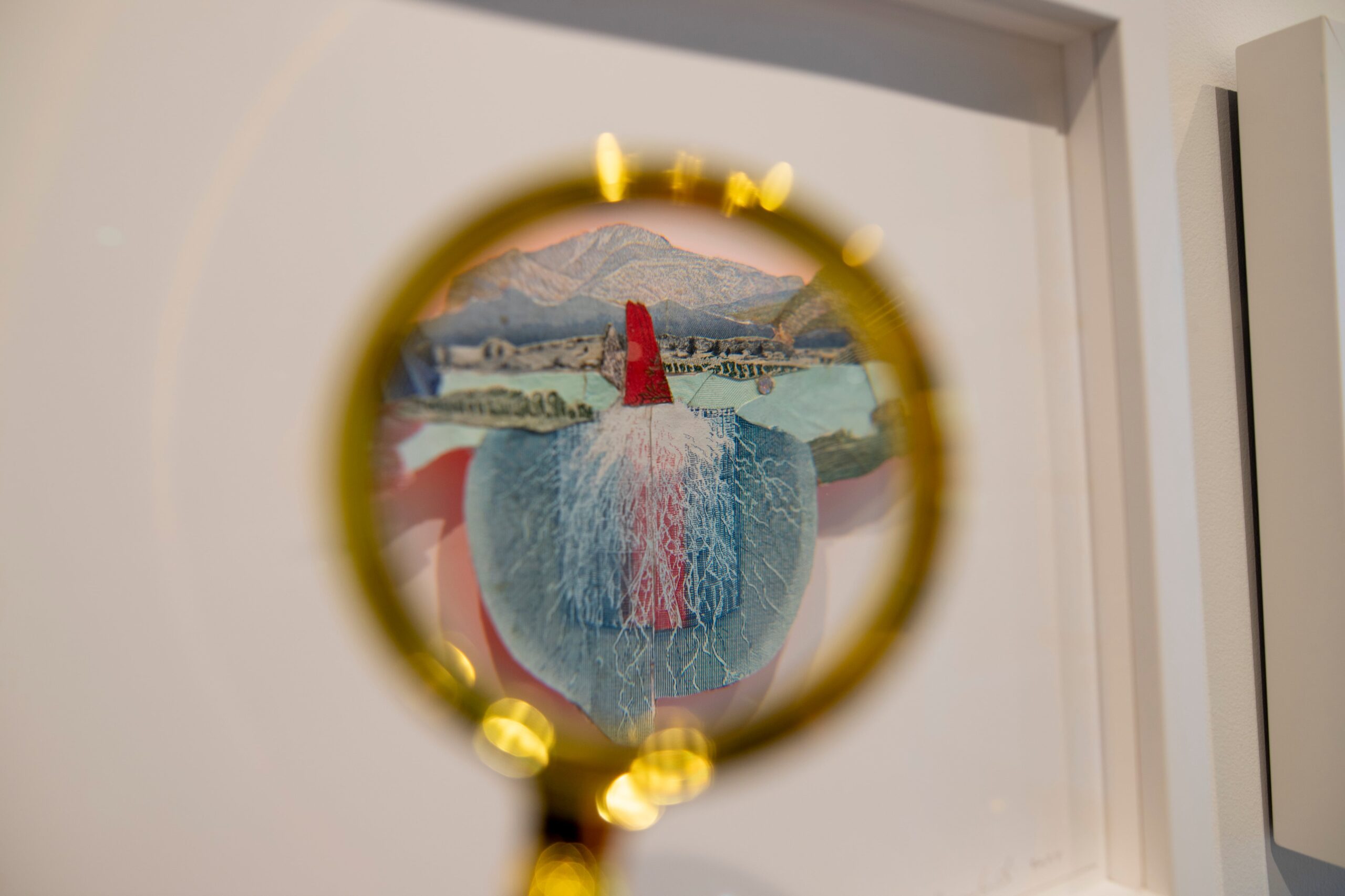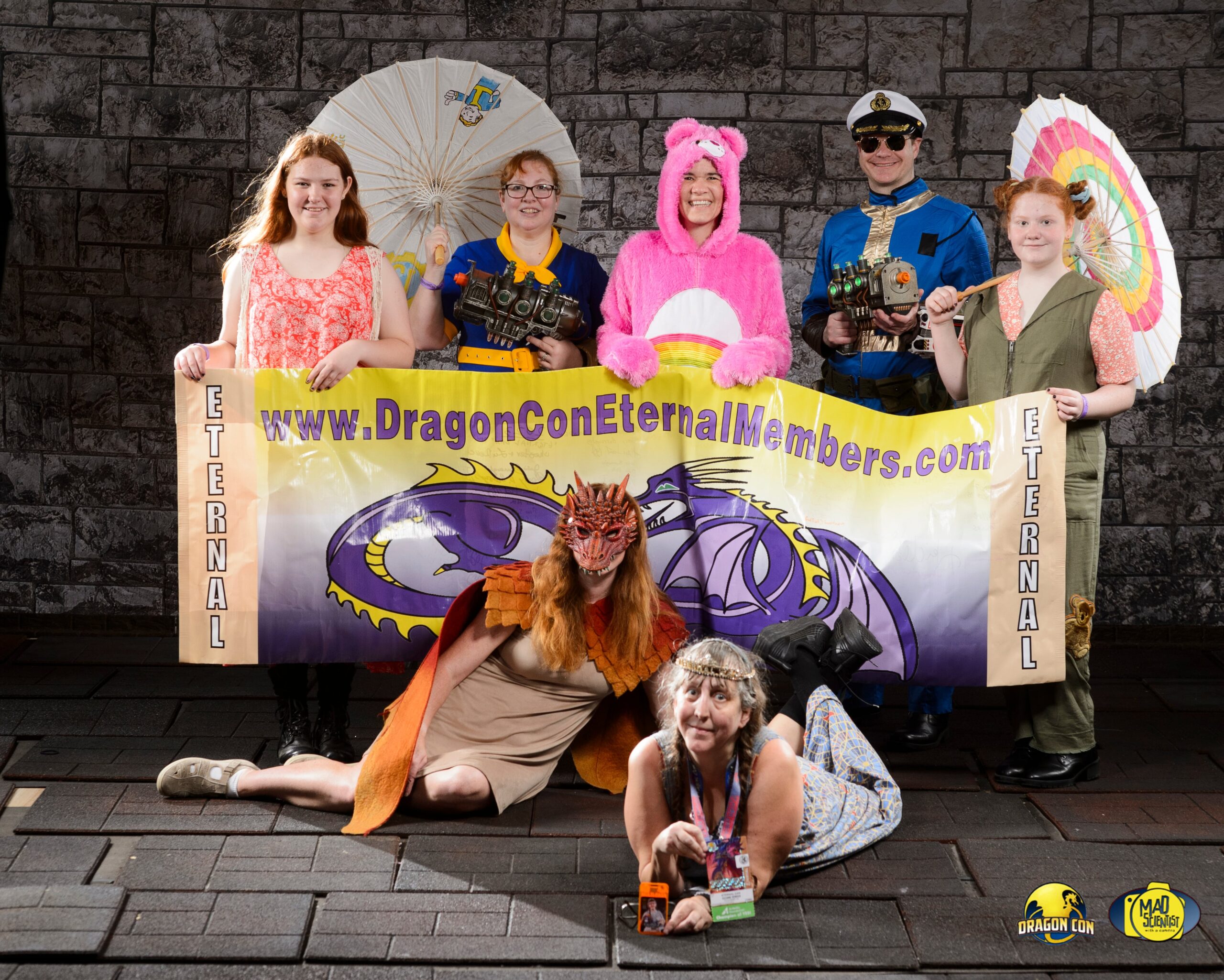Her current show, INSTAR, is on display at Sandler Hudson Gallery through August 1 and includes a number of micro collages in addition to a selection of abstracted works on paper and copper. For those who wish to examine the artwork on the walls more closely, magnifying glasses are offered at the gallery’s front desk.
Image courtesy of Isadora Pennington
Image courtesy of Isadora Pennington
According to the gallery, INSTAR is one of the five stages of metamorphosis that occur when a caterpillar turns into a butterfly. It is meant to serve as a metaphor for change and development in this context.
The core of Longobardi’s artistic work has always been a profound and enduring affection for the natural world. The daughter of parents who met when her dad, an ocean lifeguard during summer college breaks, became a coach for her mom, a Delaware diving and swimming champion, she grew up close to the beach in New Jersey. Pam had a unique perspective on the strength and grandeur of our planet’s oceans because of the backdrop and the family’s relationship to the water. She became involved in art activism after seeing plastic debris wash up on coastal coasts all around the world, which made her think about how humans affect the environment through discarded objects.
A common concern for the welfare of the world unites Longobardi’s diverse artistic career, which includes photography, sculpture, assemblage, collage, painting, and alternative procedures. Through the use of layered paper, found object sculptures, and the interaction of paints and corrosive liquids, she explores the role of humans in nature and illustrates that relationship.
According to Longobardi, she became interested in plastics after witnessing her father, a scientist who worked for Union Carbide Corp., participate in some of the first advancements in the field. Young Pam was enthralled with the procedure when he took experiments home and showed them on her kitchen counter.
Since art and science seem to me to be two sides of the same coin, or even two half of the same brain, I ultimately decided to pursue a degree in science.
Image courtesy of Isadora Pennington
Image courtesy of Isadora Pennington
Longobardi’s father relocated the family to Atlanta in order to pursue his aspirations and launch a new, albeit brief, business. Following that, her father worked at a number of unusual occupations and pursued interests, including stockbroking, hang glider flying, and, in 1960, starting his own rock climbing school.
She claimed that he was a dreamer. Intrepid, you know? he said. He never encountered any obstacles.
Following her graduation from the University of Georgia with a bachelor’s degree in fine arts, Longobardi traveled west and attended Montana State University to obtain her master’s degree in fine arts.
She was married to a cowboy and lived on a large ranch throughout this period of her life, but she had a persistent, strong desire to return to research. She described the sensation as being both incredibly solitary and somewhat cool.
Before returning to the Southeast and accepting a teaching position at the University of Tennessee in Knoxville, Longobardi spent the next stage of her life working in experimental printmaking in San Francisco. “I wasn’t into Appalachia,” she added. I ended up relocating down after getting an interview with GSU.
Image courtesy of Isadora Pennington
Image courtesy of Isadora Pennington
She settled at Georgia State University as a lecturer. I adore the students and the people. “You know,” she continued, “that’s why I’ve stayed there so long.” Really, it couldn’t get much better. My coworkers are excellent.
Longobardi described herself as a conceptual artist who is strongly rooted in materials and materiality while examining the pieces on display in INSTAR. Her copper pieces are possibly the best example of her obsession with chemistry. The compositions are naturally formed by a sequence of chemical processes, most of which result in different patinas.
Longobardi described the method as “like wild nature, uncontrolled,” adding that she likes to use both traditional art supplies and commercial items that aren’t meant for fine art to make these pieces. I can never go back to how things were once I put those down, so it’s kind of like the idea of paving over paradise.
The process reflects a sort of clash of forces and ideas, from the impetuous, experimental approach to those initial chemical reactions to the later, more deliberate additions of tiny figures and miniature trees.
I first genuinely aimed for this one planet where nature was unaltered, but as humans advanced during my lifetime, we were only beginning to invade and nearly take over. This collision has now occurred.
Longobardi is skilled at creating accurate oil paintings, but these days he has no desire to work in sluggish realism and instead favors expressive art that is created in a faster, more hectic manner. I don’t think I have the time right now, so I’m not interested in doing it. Regarding the INSTAR projects, she stated, “I feel like there’s an urgency to do these things.”
Image courtesy of Isadora Pennington
Image courtesy of Isadora Pennington
While the huge, loose, paper-based, and copper pieces in INSTAR are a clear contrast to the small size and meticulous control displayed in Longobardi’s sculptures made from devalued and obsolete currency, they nonetheless reflect another artistic investigation of value. She likes to gather old cash from foreign nations, break it up, and meticulously arrange it in tiny landscapes.
She remarked, “I think of it as a found encyclopedia of value,” adding that the images on currency from different nations might reveal the values of their respective countries. While some may have buildings, characters, and other symbols, others may showcase nature, animals, and landscapes.
Longobardi is manipulating the value of the currency by tearing it up and reassembling it into various compositions. Money cannot be used for its intended purpose once it has been cut. However, after the pieces are reframed as fine art, they acquire a completely other significance when shown on gallery walls.
In the end, the artwork in INSTAR can be seen as an extension of the concepts Longobardi has been experimenting with in other mediums, such as the sculptures made from recycled plastic that were part of her Drifters Project and displayed at the Atlanta Art Fair last year. The impact of human activity on the environment, as demonstrated by industrial chemical reactions and the garbage that inevitably results from those advancements, is a topic that is still unfinished and may never be.
PREVIEW OF THE EXHIBIT
Longobardi, Pam: INSTAR
Sandler Hudson Gallery through Aug. 1. 11 a.m. to 5 p.m. Monday through Friday, noon to five p.m. Saturdays. Atlanta, 739 Trabert Ave. NW, Suite B. Sandler Hudson, 404-817-3300.
::
Isadora Penningtonis senior editor of art + design and dance. An experienced writer and photographer with a deep love for the arts, Isadora founded the Sketchbook newsletter with Rough Draft Atlanta in 2022. She is also president of the Avondale Arts Alliance and director of the Avondale Arts Center.
Credit: ArtsATL
Credit: ArtsATL
MEET OUR PARTNER
ArtsATL (artsatl.org) is a nonprofit organization that plays a critical role in educating and informing audiences about metro Atlanta s arts and culture. ArtsATL, founded in 2009, helps build a sustainable arts community contributing to the economic and cultural health of the city.






